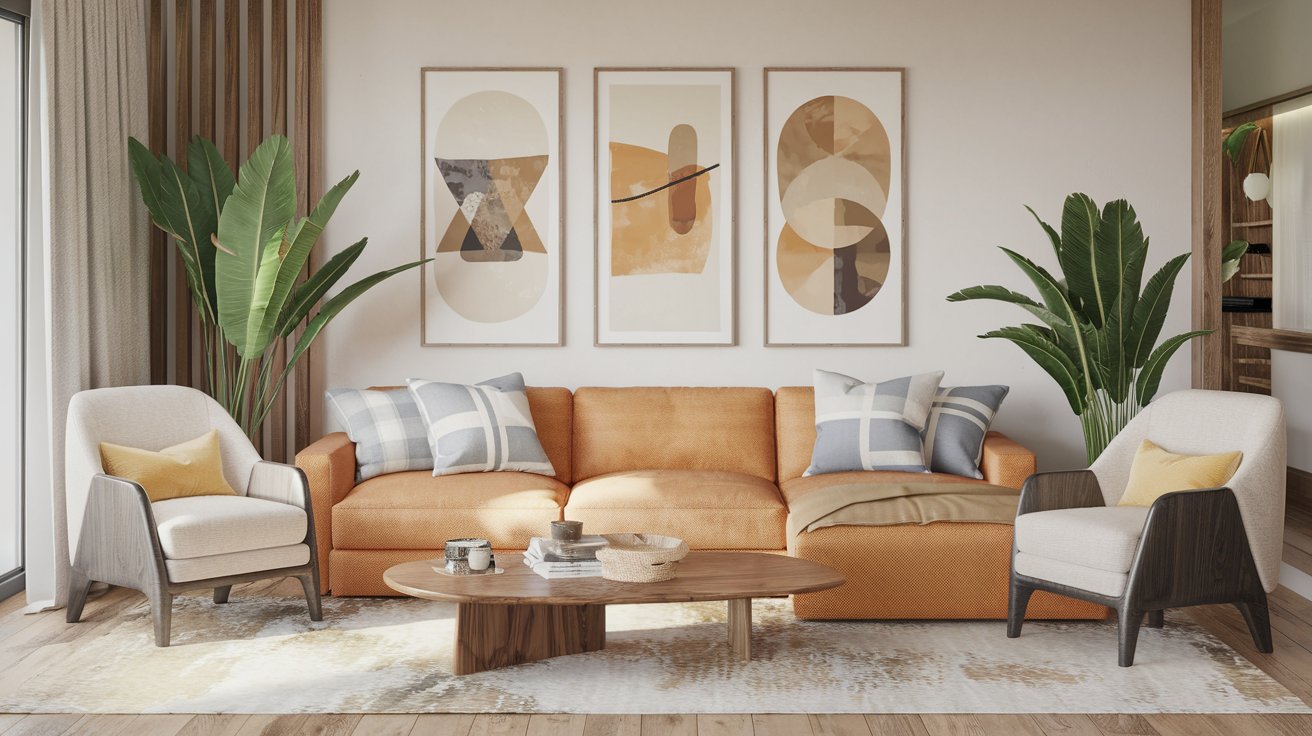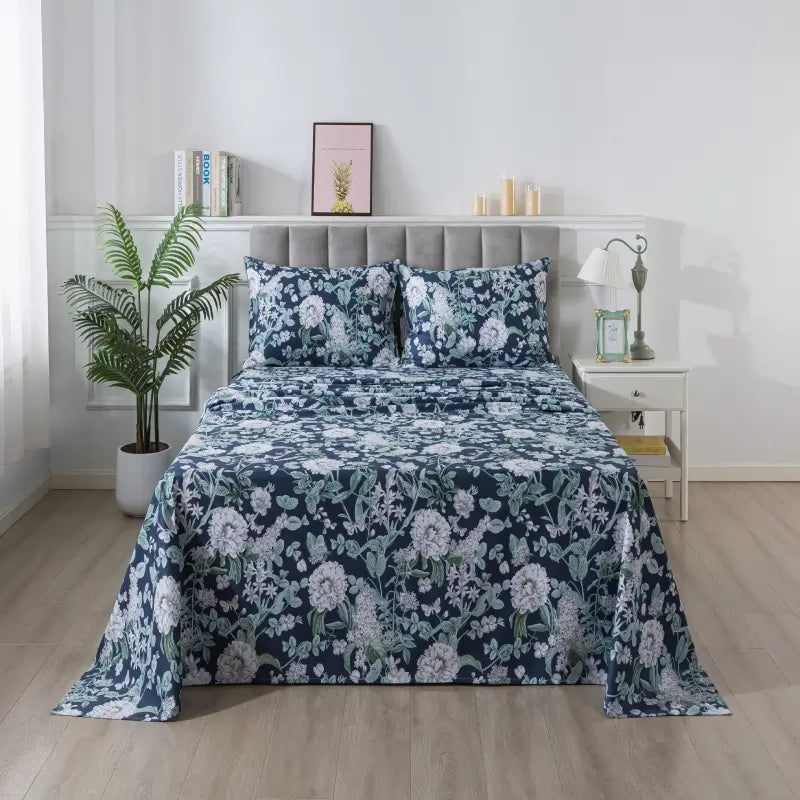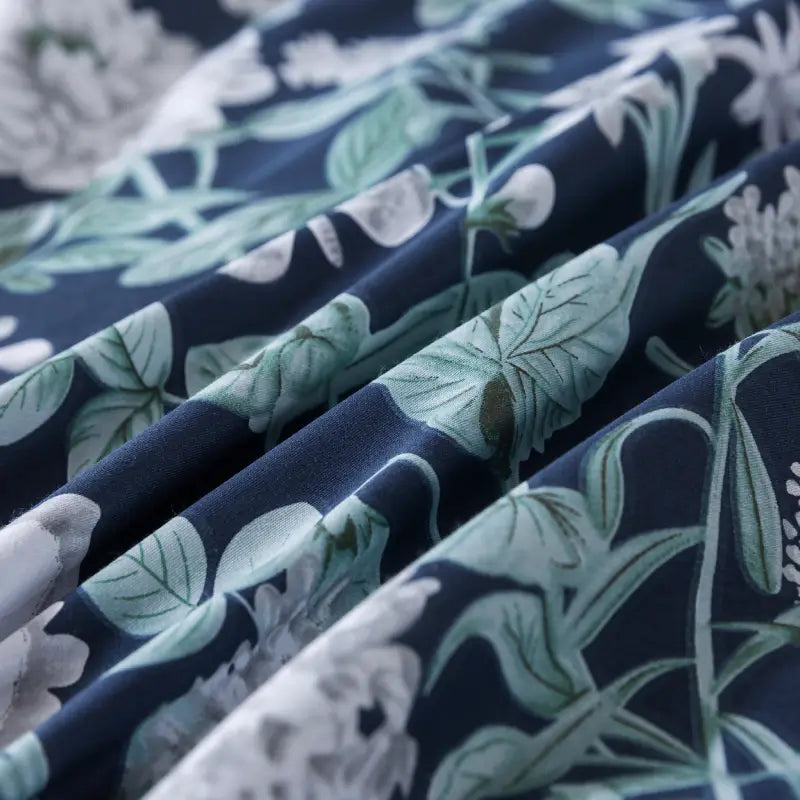Selecting the right fabric for home décor is an essential part of creating a cohesive, stylish, and comfortable space. The fabric you choose can influence everything from the look and feel of a room to its functionality and durability. With a wide range of options available—each offering different textures, patterns, and durability levels—it’s important to make informed decisions that fit your style, budget, and the specific needs of each room. In this guide, we’ll break down the essential factors to consider when choosing fabrics for your home décor.
1. Understand Your Space and Needs
Before diving into fabric selection, evaluate the space and the specific function of the fabric. Fabrics used for different parts of your home, such as the living room, dining room, or bedroom, may have varying requirements. Here are some key factors to keep in mind:
Room Functionality: High-traffic areas like living rooms and family rooms require durable, easy-to-clean fabrics, while decorative spaces like formal dining rooms or guest bedrooms can use more delicate, luxurious materials.
Comfort Level: For upholstered furniture, comfort is essential. Soft, breathable fabrics like cotton or linen are ideal for spaces where you’ll spend a lot of time relaxing. In contrast, you might choose stiffer fabrics for items like curtains or decorative cushions.
Climate: Fabrics also vary in how they interact with different climates. In warm climates, lightweight, breathable fabrics like cotton or linen can help keep the space cool. In colder climates, you might opt for heavier fabrics like wool or velvet for extra warmth and coziness.
Understanding the specific demands of your space will help you choose fabrics that not only look great but are also functional and durable.
2. Choose the Right Fabric Type
Once you’ve assessed the needs of your space, it’s time to select the appropriate fabric type. Here’s a breakdown of some common fabric types and their pros and cons:
Cotton: One of the most versatile fabrics, cotton is soft, breathable, and easy to clean. It works well in casual spaces like living rooms and bedrooms but may not be ideal for formal spaces due to its more relaxed appearance. Cotton fabrics are great for slipcovers, curtains, and throw pillows.
Linen: Known for its cool, airy feel, linen is a popular choice for window treatments and upholstery. It has a casual, natural look but can wrinkle easily, making it better suited for decorative spaces where durability is less of a concern.
Velvet: Luxurious and plush, velvet adds a rich texture to any room. It’s an excellent choice for formal spaces or accent furniture, but it can be difficult to clean and maintain. Velvet tends to look more opulent, so it’s ideal for creating a sophisticated, elegant atmosphere.
Polyester: As a synthetic fabric, polyester is highly durable, stain-resistant, and affordable. It’s commonly blended with other fibers to improve strength and longevity. Polyester is a good choice for high-traffic areas where durability and easy maintenance are priorities.
Wool: Wool is a durable, natural fabric that offers excellent insulation, making it a popular choice for colder climates. It is often used in rugs, upholstery, and blankets. Wool fabrics are naturally resistant to stains and wear, but they can be more expensive.
Silk: Smooth and luxurious, silk is often used in decorative accents such as pillows and curtains. It’s delicate and can be difficult to clean, so it’s best suited for low-traffic, formal areas.
Leather: For upholstery, leather is a durable, easy-to-clean material that offers a sleek, modern aesthetic. Leather ages beautifully, developing a patina over time, making it perfect for long-term use in high-traffic areas.
3. Consider Durability
Durability is a crucial factor when choosing fabrics for home décor, especially for items like upholstery, curtains, or rugs that will experience frequent use. The durability of fabric is often measured by the Martindale rub test or double rub test, which indicates how much wear a fabric can withstand before it starts to show signs of wear and tear.
High-Traffic Areas: For rooms like living rooms and dining rooms where furniture gets regular use, choose fabrics with a high rub count—around 30,000 or higher. Synthetic blends, cotton-polyester mixes, or leather are excellent options for their durability.
Low-Traffic Areas: In spaces like guest rooms or decorative seating, you can opt for more delicate fabrics such as silk or linen, which don’t need to withstand heavy wear.
Additionally, stain resistance and ease of cleaning are important for homes with children or pets. Fabrics with stain-resistant treatments or synthetic fibers like polyester can handle spills and messes more effectively.
4. Think About Color and Pattern
Color and pattern play a significant role in how a fabric will look in your home. Consider how the fabric’s color and design will work with the rest of your décor and the overall ambiance you want to create:
Neutral Tones: Neutral-colored fabrics, such as beige, grey, or white, offer versatility and flexibility. They blend well with a variety of styles and allow you to update your décor without having to change major furniture pieces.
Bold Colors: Vibrant, bold fabrics can add personality to your space. Deep hues like navy, emerald green, or burgundy can create a dramatic effect, while brighter shades like yellow or coral can bring energy to a room.
Patterns: Fabrics with patterns—florals, geometric designs, stripes—add visual interest to your décor. When choosing patterned fabrics, balance them with solid colors to avoid overwhelming the space. Consider using patterned fabrics for accent pieces like throw pillows or curtains rather than large furniture pieces.
When selecting colors, consider the longevity of the color choice. Neutral tones tend to age better over time, while trendy colors or patterns may feel dated after a few years.
5. Consider the Maintenance Requirements
Different fabrics require different levels of care, so it’s important to choose fabrics that fit your lifestyle. If you have children or pets, you’ll want to opt for fabrics that are easy to clean and maintain.
Machine-Washable Fabrics: If convenience is a priority, consider machine-washable fabrics like cotton, linen, or polyester blends for slipcovers, curtains, or throw pillows. These fabrics can be washed at home and are less likely to shrink or fade with frequent cleaning.
Dry Clean Only: Delicate fabrics such as silk, velvet, or certain wools may require professional cleaning. While these materials offer luxurious looks and textures, they can be costly and time-consuming to maintain.
Stain-Resistant Fabrics: Many synthetic fabrics, such as polyester or microfiber, are inherently stain-resistant or come with special treatments that make them easier to clean. These fabrics are ideal for households with pets or children where spills are more likely.
Consider the care instructions before choosing a fabric to ensure it fits your lifestyle and cleaning preferences.
6. Match the Fabric to the Style of Your Home
The fabric you choose should complement the overall style of your home décor. Whether you’re aiming for a modern, minimalist look or a more traditional, cozy feel, the right fabric can enhance your design.
Modern and Minimalist: If your home décor leans toward modern or minimalist, opt for sleek, understated fabrics like leather, linen, or polyester blends. Stick to neutral tones and simple patterns to maintain a clean, streamlined look.
Traditional and Classic: For a more classic or traditional décor style, rich, textured fabrics like velvet, silk, or wool are ideal. Deep colors, elegant patterns, and timeless textures will elevate the sophistication of the space.
Eclectic and Bohemian: In an eclectic or bohemian home, embrace a mix of patterns, colors, and textures. Don’t be afraid to layer different fabric types, such as combining a floral-print cotton couch with geometric-patterned silk pillows.
Fabrics from Fadfay are particularly suited for romantic, country-inspired, or shabby-chic interiors, thanks to their detailed floral patterns and soft, cozy textures.
Conclusion
Choosing the right fabric for your home décor requires careful consideration of functionality, durability, and style. By understanding the specific needs of each space, selecting the appropriate fabric type, and paying attention to details like color, pattern, and maintenance, you can create a beautiful and comfortable home that reflects your personal taste. Whether you opt for luxurious velvet or practical cotton, the right fabric can elevate the design and comfort of any room in your home.

















